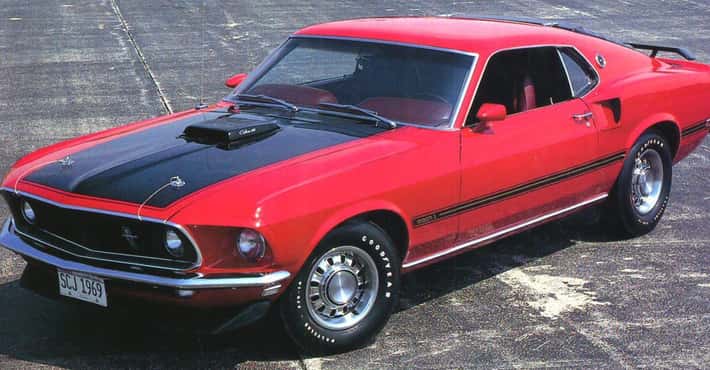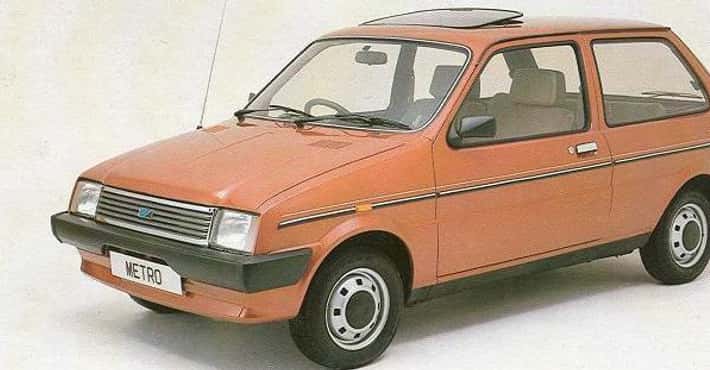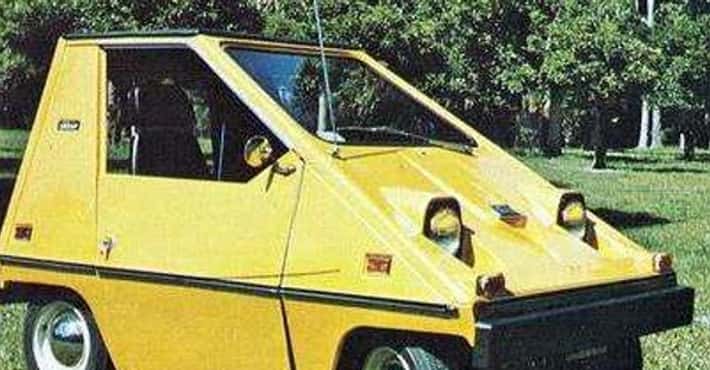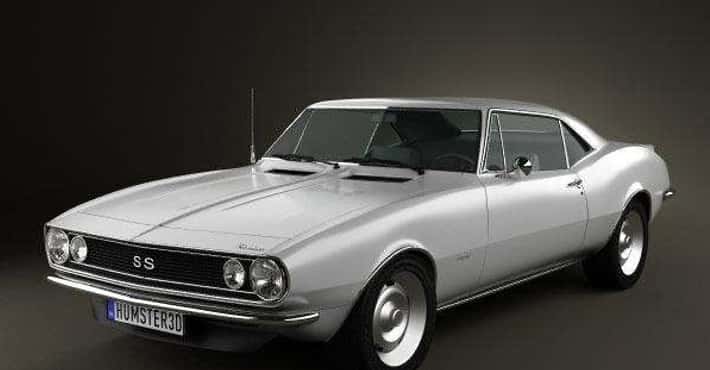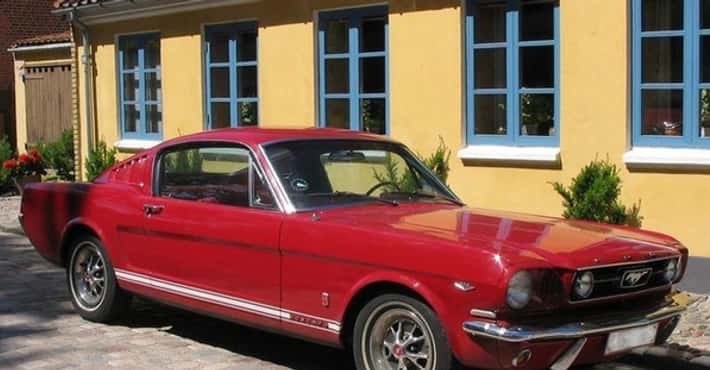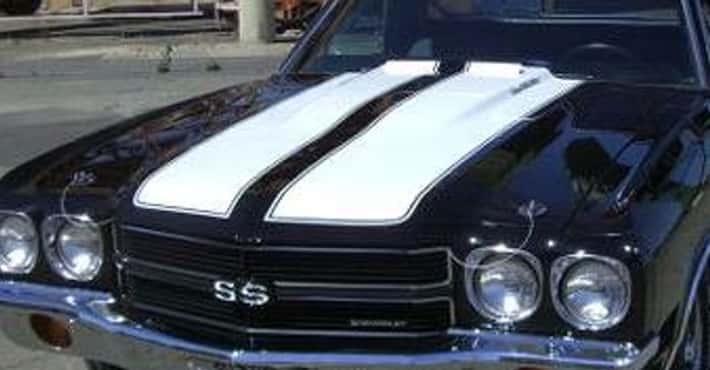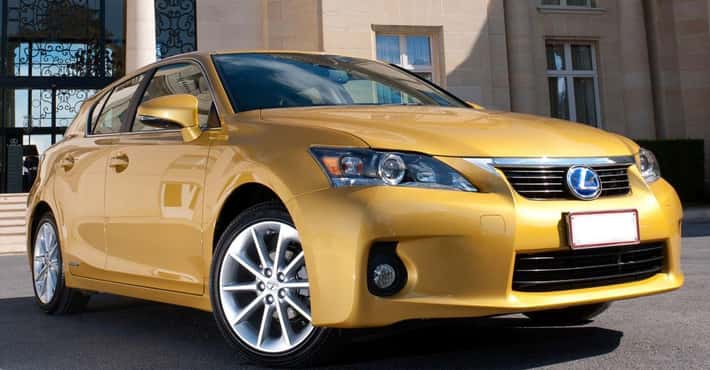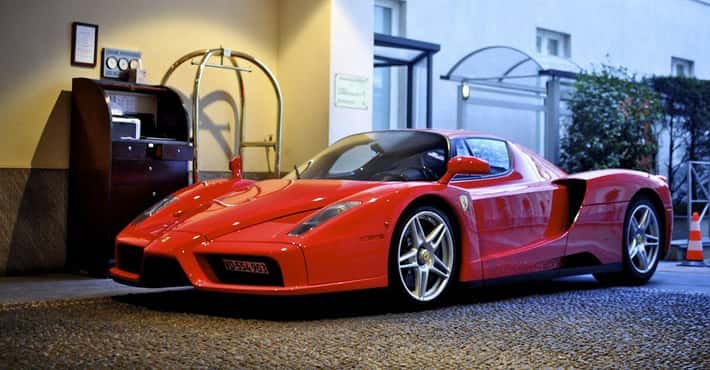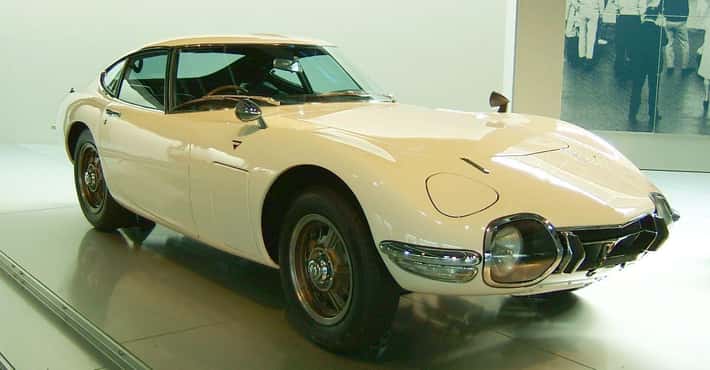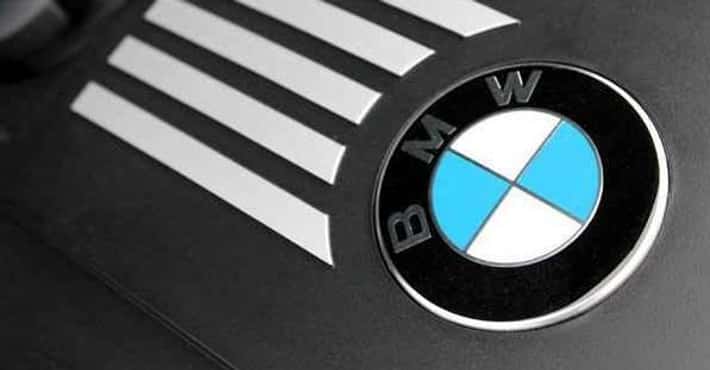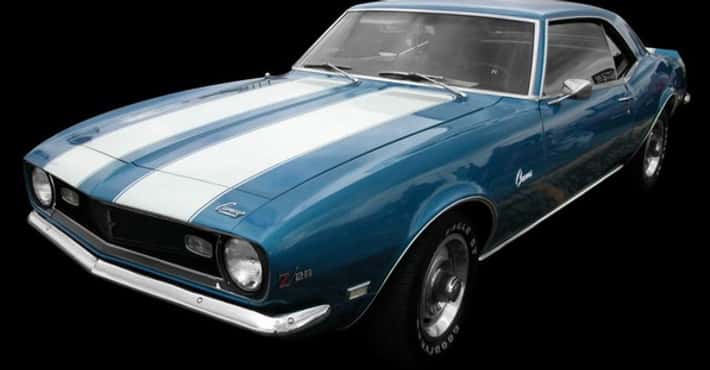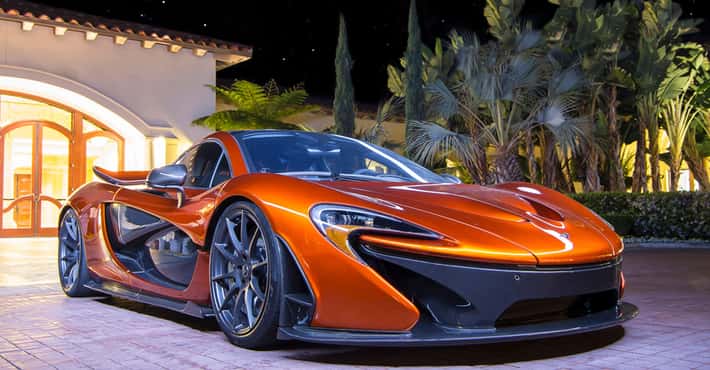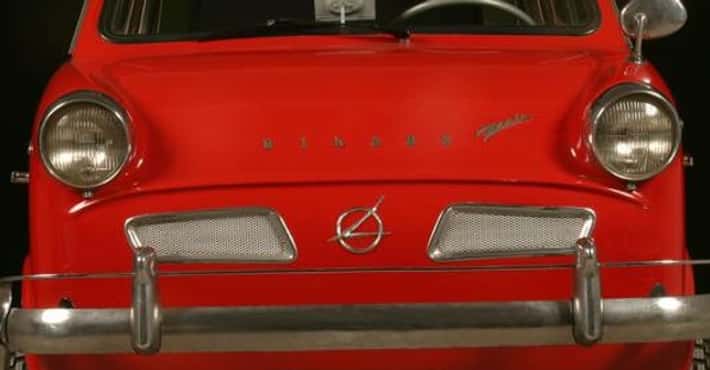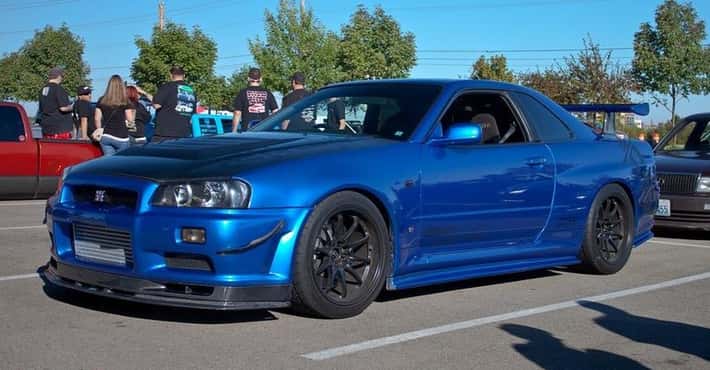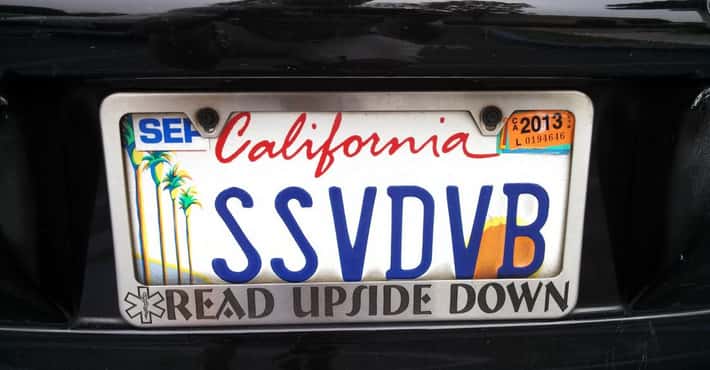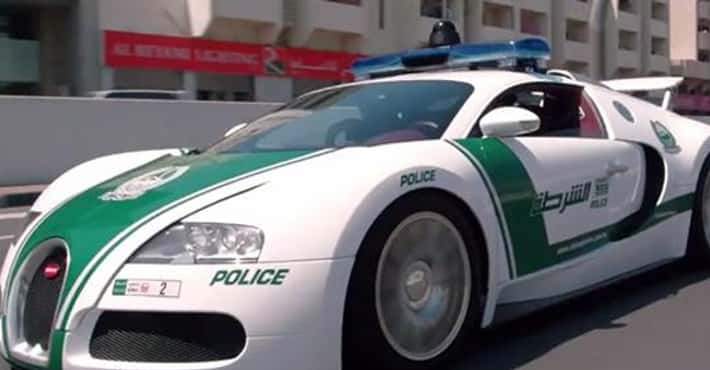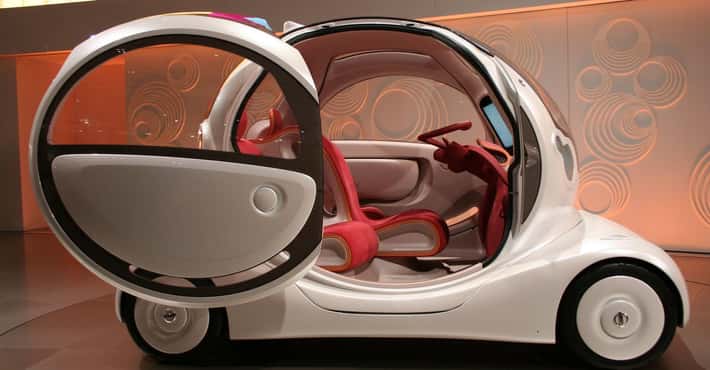Full List of Mercury Models
- Photo: Metaweb (FB) / Public domainThe Mercury Milan was a mid-size sedan based on the Mazda designed Ford CD3 platform built by Ford Motor Company and distributed by the Mercury division. It is a twin of the Ford Fusion, while being slotted below the luxury-spec Lincoln MKZ sedan. The Milan was first shown at the 2005 Chicago Auto Show, and was sold in the United States, Mexico, and the Middle East. With Ford eliminating the Mercury division, production of the Milan ended December 17, 2010. The Milan differs from the Fusion by featuring unique front and rear fascia designs, LED taillight clusters, projector head lamps and fog lamps, and an upgraded interior. The Milan filled the lineup gap following the discontinuation of both the Mercury Mystique in 2000 and the Mercury Sable in 2005, becoming the entry-level Mercury sedan. The Milan is available in six packaged variants: I4, V6, I4 Premier, V6 Premier, V6 AWD, and Premier AWD. As of 2008, only the I4 and I4 Premier are offered in the Middle East. In the 2007 model, the "MILAN" badging was added at the doors. In 2009 they added the VOGA package which included white leather seats and exclusive chrome rims.
- Mercury Cougar is a nameplate that was applied to a diverse series of automobiles sold by the Mercury division of Ford Motor Company from 1967 to 2002. While most examples were produced as two-door coupes, at various times throughout its production life, the Cougar was also sold as a convertible, four-door sedan, station wagon, and hatchback. As was the common practice within the Mercury division, the Cougar shared its basic underpinnings with a Ford counterpart. At the time of its introduction, it was based upon the Ford Mustang. While briefly based upon the Ford Elite during the mid-1970s, the Cougar would subsequently become the Mercury counterpart of the Ford Thunderbird for the rest of the 1970s into the late 1990s. After its initial discontinuation, the Cougar emerged as a sports coupe counterpart of the Ford Contour "world car"; as such, it was sold outside of North America as the Ford Cougar. For many years, the Cougar was important to the image of the Mercury division; advertising often identified its dealers as being "at the sign of the cat." Female models holding big cats on leashes were used as part of Cougar advertising in the early 1970s.
- Photo: Metaweb (FB) / Public domainThe Mercury Villager is a minivan manufactured and marketed by the Mercury division of Ford Motor Company for model years 1993–2002, in a single generation. Internally designated as model VX54, the Villager was a rebadged variant of the Nissan Quest—a product of a joint venture between Ford and Nissan, manufactured at Ford's Ohio Assembly plant in Avon Lake, Ohio. Noted for its innovative seating configurations, the Villager featured a folding, removable, middle seat along with a non-removable, fold-and-slide track-mounted rear seat. The arrangement enabled the rear seat to slide forward to the middle position for five-passenger seating, or completely forward against the front seats to make a larger cargo space.
- Photo: Metaweb (FB) / Public domainThe Mercury Sable is a four-door sedan and station wagon marketed over five generations by the Mercury division of the Ford Motor Company for model years 1986-2005 as a mid-size car and 2008-2009 as a full size car, with a hiatus for model years 2006 and 2007, when a rebadged variant was marketed as the Mercury Montego. During its 21-year production run, the Sable was itself a badge-engineered variant of the contemporary Ford Taurus. Along with the Taurus, the Sable was a milestone design, highly influential vehicle in the marketplace, with a total of 2,112,374 Sables marketed from 1985-2005.
- Photo: Metaweb (FB) / Public domainThe Mercury Mariner is a compact crossover SUV that was introduced in 2005. It is a sibling of the Mazda Tribute and Ford Escape, although it is more upmarket than the other two. The Mariner is Mercury's first car-based SUV, and is slotted below the Mountaineer in the lineup. When Ford eliminated the Mercury brand, the Mariner ended production in October 2010. The Mariner was officially offered in the U.S., Mexico, Saudi Arabia, Kuwait, and the U.A.E.
- Photo: Metaweb (FB) / Public domainThe Mercury Grand Marquis was a full-size rear-wheel drive luxury sedan that was sold by the Lincoln-Mercury division of the Ford Motor Company; the Grand Marquis was the flagship of the Mercury lineup. The nameplate had been in use since 1975 as the premium trim level of the Mercury Marquis; the Grand Marquis became a distinct model in 1983. The car was essentially Mercury's twin of the Ford Crown Victoria with which it shared the Panther platform along with the Lincoln Town Car. After the discontinuation of the Crown Victoria at the end of the 2007 model year, the Grand Marquis had largely taken its place as the entry-level Panther-platform model. The Grand Marquis was manufactured at the St. Thomas Assembly Plant in Southwold, Ontario, Canada though it was also produced from 1983 to 1985 at Ford's St. Louis, Missouri facility. With the discontinuation of the Mercury brand, the Grand Marquis ended retail production in October 2010 while production for fleet sales continued until January 2011. The last Grand Marquis, which was also the last Mercury ever produced, rolled off the assembly line on January 4, 2011.
- Photo: Metaweb (FB) / Public domainThe Mercury Marauder was the name of three different automobiles made by the Mercury division of Ford Motor Company. During the 1960s, the Marauder was introduced as the high-performance model of the full-size Mercury line; its Ford equivalent was the Galaxie. From 2003, the Marauder nameplate was revived as a high-performance variant of the full-size Grand Marquis. After lower than expected sales, the Marauder was discontinued at the end of the 2004 model year.
- Photo: Metaweb (FB) / Public domainThe Mercury Monarch is a compact automobile which was manufactured by the Ford Motor Company; it was sold by the Lincoln-Mercury division from 1975 to 1980. Released in model year 1975 alongside the Ford Granada; the cars, which were badge-engineered, were identical save for the grille, taillights and some interior and exterior trim. A total of 575,567 Monarchs were produced during this time period. For 1981, the Granada was replaced with a smaller version based on Ford's Fox platform, and the Mercury version took the Cougar name.
- Photo: Metaweb (FB) / Public domainThe Mercury Mountaineer was a mid-size luxury sport utility vehicle that was sold by the Mercury division of Ford Motor Company from 1997 until 2010. Sharing many of its features with the Ford Explorer, the vehicles were virtually identical, in terms of hardware. Externally, they were styled somewhat differently, and the Mountaineer was positioned with a more upscale interior, with the Mountaineer's MSRP coming in at $1,000–$6,000 more than the Explorer. It was last redesigned for the 2006 model year with a new frame, looking very similar to its previous model. Some controversy resulted after the media highlighted a number of rollovers involving Explorers and Mountaineers fitted with Firestone tires. The Mountaineer has been praised for its excellent handling and stability. The Mountaineer was never sold in Canada. As part of the discontinuation of the Mercury brand, production of the Mountaineer ended in late 2010.
- The Mercury Park Lane was a fullsize automobile produced by the Mercury division of the Ford Motor Company from 1958 to 1960 and by the Lincoln-Mercury Division from 1964 to 1968. During this time, the Park Lane resembled the Monterey, but with a higher trim level.
- The Mercury Meteor was an automobile model produced by the Lincoln Mercury division of the Ford Motor Company from 1961 to 1963. For 1961, the name was applied to low-end full-sized vehicles; for 1962 and 1963, the name was applied to Mercury's mid-sized sedans, in a marketing attempt to appeal to the excitement surrounding the Space Race, before being discontinued. Introduced while Mercury as a marque was in flux, and never a solid marketplace performer in consumer sales, the Meteor remains more a side note than a well known Mercury product.
- Photo: Metaweb (FB) / Public domainThe Mercury Monterey is a full-size car model introduced by the Mercury division of the Ford Motor Company in 1952. It would later share the same body style with the slightly more upscale Marquis, and the Park Lane and Montclair until the latter two were extinguished after the 1968 model year. The Marquis-Monterey body was built on a longer wheelbase and had a longer body than the Ford LTD, Ford Galaxie, and Ford Custom. During its production the Monterey served as the high-end, mid-range, and entry-level fullsize Mercury at various times throughout its run. It was the only Mercury to be in continuous production throughout the 1960s. After the 1974 model year, the Monterey was discontinued as Mercury streamlined its full-size offerings down to the Marquis nameplate. From 2004 to 2007, the nameplate was revived for a minivan, the counterpart of the Ford Freestar.
- The Mercury Capri was marketed in North America by the Lincoln-Mercury division of the Ford Motor Company. The Mercury Capri was sold in the US as three distinctly different cars over three decades. The Capri for the 1971–74 model years and Capri II for 1976–77 were Ford captive imports made by Ford of Europe in Germany. At its peak, Capri sales in North America were the highest for any import model except the Volkswagen Beetle. These Capris, now fairly rare, are becoming sought after for restoration because of their styling, performance & relative affordability. The Capri from 1979–86 was a rebadged Ford Mustang made in the US, and from 1991–94, a convertible from Ford Australia.
- The Mercury Colony Park was the top-of-the-line full-size station wagon offered by the Mercury division of Ford Motor Company between 1957 and 1991. Following the demise of Edsel, the Colony Park became the Mercury equivalent of the Ford Country Squire and the station wagon version of the Marquis in 1969. It was distinguished by woodgrain paneling on the body sides and tailgate, a feature also associated with competitive station wagons such as the Chrysler Town & Country and the Oldsmobile Custom Cruiser.
- The Mercury Montclair was a full-size automobile produced by the Mercury Division of the Ford Motor Company from 1955 to 1957, the M-E-L Division of Ford Motor Company 1958 to 1959 and by the Lincoln Mercury Division of the Ford Motor Company from 1964 to 1968. Its appearance followed the concept show car in 1954 called the Mercury XM-800.
- Photo: Metaweb (FB) / Public domainThe Mercury Comet was an automobile produced by the Mercury division of the Ford Motor Company from 1960–1969 and 1971-1977 — variously as either a compact or an intermediate car. The Comet was initially based on the compact Ford Falcon, then on the intermediate Ford Fairlane and finally on the compact Ford Maverick. As a Mercury, early Comets received better grade interior trim than concurrent Falcons, and a slightly longer wheelbase.
- The Mercury Commuter was Mercury's lowest-priced full-size station wagon from 1957 to 1968. When introduced for the 1957 model year it was priced below Mercury's other two new full size wagons, the Voyager and the Colony Park. In 1957 the same 368 cu in Lincoln Y-Block V8 that was standard equipment on the Mercury Turnpike Cruiser was optional equipment on the Commuter. It was initially available as a two-door wagon and as a four-door wagon with the former discontinued after the 1959 model year. The Commuter was temporarily absent in 1963, in concession to the new Meteor station wagons, but was reinstated for 1964, when the Meteor was dropped. The Commuter was phased out for good, like the full-size Mercury Montclair and Park Lane, after the 1968 model year. On a collectible scale model note, a 1968 Commuter wagon was rendered in the form of a Matchbox scale die cast car, however, along with a companion Matchbox 1968 Park Lane sedan.
- The Mercury Eight was the first model of the Ford Motor Company's Mercury marque and was produced from the 1939 through the 1951 model years. It was the only model offered by Mercury until the marque starting producing multiple series in the 1952 model year, at which point it was dropped as a model designation.
- Photo: Metaweb (FB) / CC-BYThe Mercury Zephyr was a compact car sold by the Lincoln-Mercury division of Ford Motor Company for the North American market. Introduced as a replacement for the Mercury Comet, it was produced from 1978 to 1983. Along with its corporate cousin, the Ford Fairmont, it was the first use in the Mercury division of the long-lived unibody Fox platform, which did not completely leave production until 2004. Zephyr, taken from a poetic name for the west wind, has a considerable history in the Ford line. It was first used in the late 1930s for a smaller, less expensive Lincoln, which provided the basis for the first Continental. From 1950 to 1972, it was used on a European Ford model. In 2006, it returned to the Lincoln line once again.
- Photo: Metaweb (FB) / Public domain
- Photo: Metaweb (FB) / Public domainThe Mercury Topaz is a compact car that was manufactured by the Mercury division of Ford Motor Company for model years 1984 to 1994 as a slightly upscale variant of the Ford Tempo. It succeeded the Fox body Mercury Zephyr, and was replaced by the 1995 Mercury Mystique.
- Photo: Metaweb (FB) / Public domainThe Mercury Montego is a nameplate applied to three distinctly different vehicles marketed by Ford Motor Company. The nameplate first appeared in 1967 in Canada as part of the Mercury-derived Meteor line. After 1976, the basic design of the Montego was updated and the nameplate disappeared as the Cougar expanded its lineup. For model years 2005-2007, the Montego name was revived for a full-size car, a rebadged variant of the Ford Five Hundred. The Montego names derives from the Jamaican city of Montego Bay.
- The Mercury Cyclone is an automobile produced by the Mercury division of the Ford Motor Company from 1964 to 1971. It started as a performance model of the 1964 Mercury Comet, and was named the Mercury Comet Cyclone through 1967. For 1968, the "Comet" part of the name was dropped. Options such as GT, Spoiler and Cobra Jet were added and removed. In 1971, it was integrated into the Mercury Montego line as their performance model.
- The Mercury Marquis is a vehicle sold that was by the Mercury brand of Ford Motor Company from 1967 to 1986. It was produced for several generations as the Mercury counterpart of the full-size Ford; in 1983, the Marquis became Mercury's mid-size car. The highest trim level of the Marquis, the Grand Marquis, continued in production as the full-size Mercury product line. As Ford Motor Company adopted front-wheel drive cars during the 1980s, the Marquis was phased out after the 1986 model year; it was replaced by the Mercury Sable, the twin of the Ford Taurus. The word "Marquis" is a French spelling of the English word marquess, which was a nobility title prior to the Middle Ages.
- Mercury Cougar Eliminator was a car produced by Mercury.
- Mercury Cyclone Spoiler was a car produced by Mercury.
- Mercury Cyclone Spoiler II was a car produced by Mercury.
- Photo: Metaweb (FB) / Public domainThe Mercury Lynx was a compact car produced by the Ford Motor Company for its Mercury division from 1981 to 1987. It was a rebadged version of the Ford Escort. In 1987, the Lynx was dropped after slumping sales. In 1988, Mercury launched the Tracer as the Lynx's replacement. The Tracer was based on the Mazda 323, was built in Mexico and Japan, and shared nothing with the Lynx. 1985 ¹⁄₂–1987 Mercury Lynx 3-door hatchback 1985 ¹⁄₂–1987 Mercury Lynx wagon 1986 Mercury Lynx 5-door hatchback
- The mercury Concept was a concept car created by Ford Motor Company under their Lincoln-Mercury Division. The my mercury was first introduced at the 1999 North American International Auto Show. The my mercury was designed by J Mays, the same designer of the Volkswagen New Beetle. This might also explain why the my mercury's curved roofline resembles the New Beetle's. The assembly of the Mercury My concept car was made in Pretoria, South Africa.
- Photo: Metaweb (FB) / Public domainThe Mercury M-Series pickup truck was produced between 1946 and 1968 by Ford Motor Company of Canada, primarily for Canada. Early versions often came with a higher output Mercury/Ford flathead V8 engine over and above the unique Mercury-specific grille, badging and trim that adorned every Mercury M-Series truck. The M-Series was introduced in Canada because smaller communities either had a Ford dealer or a Lincoln-Mercury-Meteor dealer, but not both; a Mercury truck line offered more opportunities for truck sales.
































